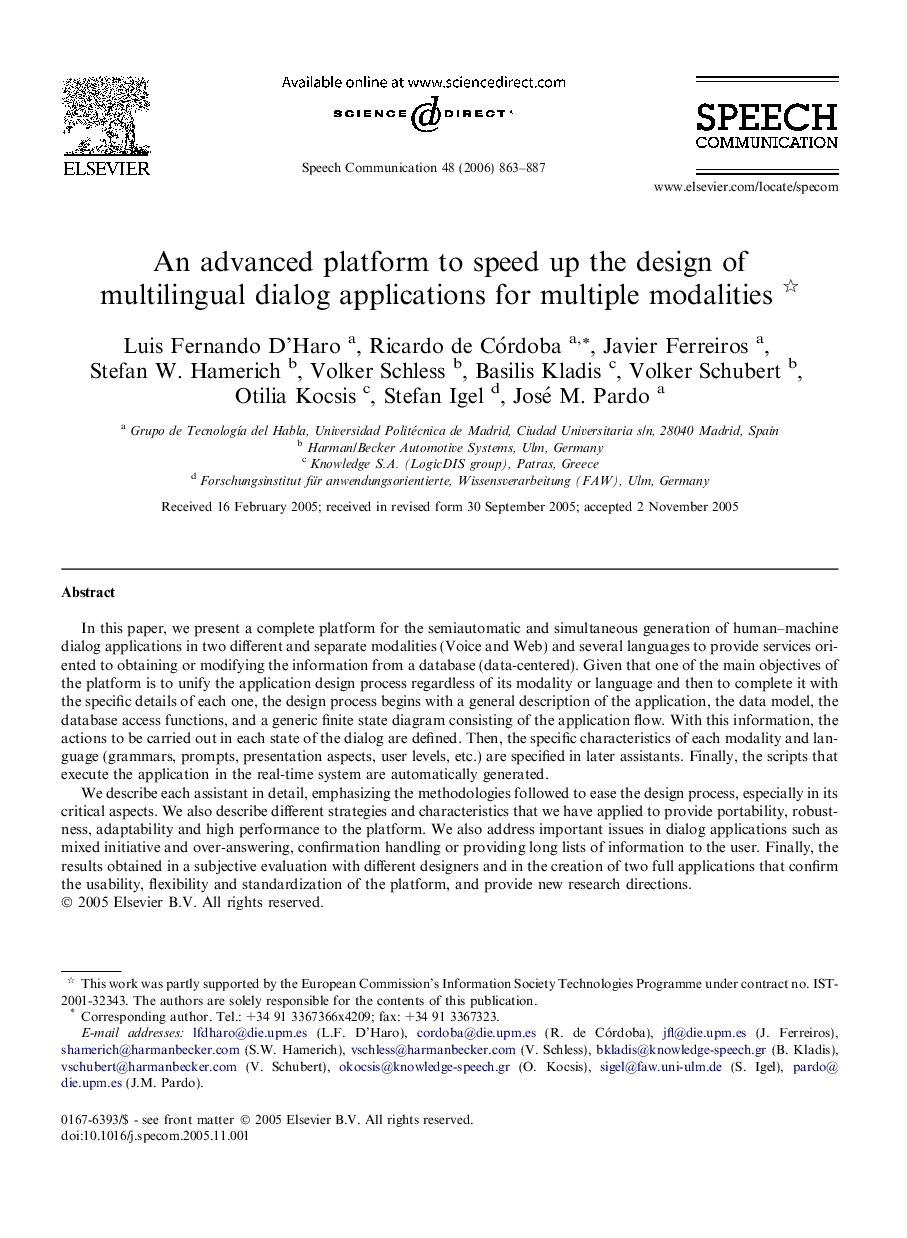| Article ID | Journal | Published Year | Pages | File Type |
|---|---|---|---|---|
| 568995 | Speech Communication | 2006 | 25 Pages |
In this paper, we present a complete platform for the semiautomatic and simultaneous generation of human–machine dialog applications in two different and separate modalities (Voice and Web) and several languages to provide services oriented to obtaining or modifying the information from a database (data-centered). Given that one of the main objectives of the platform is to unify the application design process regardless of its modality or language and then to complete it with the specific details of each one, the design process begins with a general description of the application, the data model, the database access functions, and a generic finite state diagram consisting of the application flow. With this information, the actions to be carried out in each state of the dialog are defined. Then, the specific characteristics of each modality and language (grammars, prompts, presentation aspects, user levels, etc.) are specified in later assistants. Finally, the scripts that execute the application in the real-time system are automatically generated.We describe each assistant in detail, emphasizing the methodologies followed to ease the design process, especially in its critical aspects. We also describe different strategies and characteristics that we have applied to provide portability, robustness, adaptability and high performance to the platform. We also address important issues in dialog applications such as mixed initiative and over-answering, confirmation handling or providing long lists of information to the user. Finally, the results obtained in a subjective evaluation with different designers and in the creation of two full applications that confirm the usability, flexibility and standardization of the platform, and provide new research directions.
